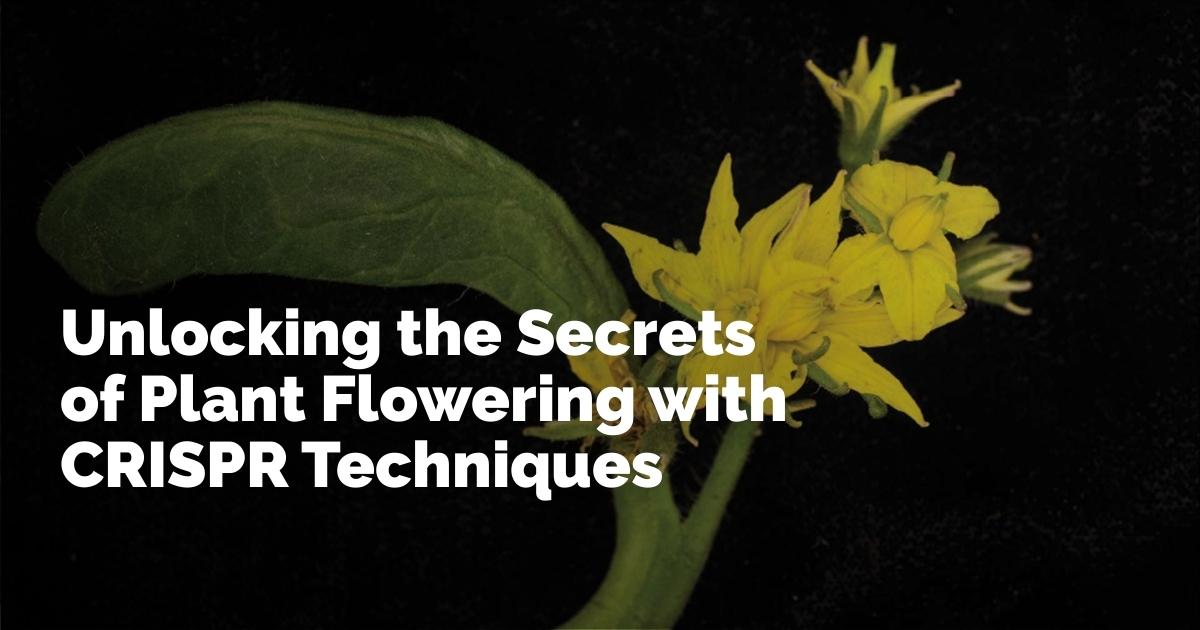CRISPR Gene Editing Sheds Light on Plant Flowering Mechanisms
Humans have long admired the beauty of flowers, appreciating their vibrant colors and pleasing structures. However, flowers serve a more critical purpose beyond their visual appeal – they play an essential role in plant reproduction. At the heart of this intricate process lies a well-researched gene known as Unusual Floral Organs (UFO). This gene orchestrates the flowering process in plants, and its expression is regulated by a complex phenomenon called cis-regulation. Despite years of study, the intricacies of this process have largely remained elusive, a "black box" in the realm of plant biology.
Understanding Cis-Regulatory Control
In recent advances, CRISPR gene editing technology has become a powerful tool in unraveling genetic complexities. Cold Spring Harbor Laboratory (CSHL) Professor Zachary Lippman, in collaboration with his colleagues, is leveraging this technology to demystify how fragments of non-coding DNA, termed cis-regulatory sequences, influence the expression of the UFO gene. This groundbreaking work aims to provide insights into optimizing gene editing for agricultural enhancement. Lippman elaborates on the significance of their research:
"We could have chosen many other genes. We chose this one because it was pretty clear it was going to have that kind of exquisite control. That’s because the flower is a complex structure, and the genes that control its development are very regulated in time, space, and levels."
Conserved Sequences in Flowering Plants
The research team concentrated on two distantly related flowering plants: tomato and Arabidopsis. In their quest, they identified non-coding DNA sequences pivotal to switching the UFO gene on and off in these plants. The fact that these sequences are conserved—maintained through evolutionary history—marks them as vital components in gene expression regulation. Lippman points out the evolutionary significance:
"It’s a good indication that those sequences have been selected by evolution because they’re important in controlling gene expression. However, you can’t know until you actually do mutations in those sequences and see what happens."
Manipulating Genetic Sequences with CRISPR
Utilizing CRISPR technology, Lippman and his team altered these non-coding sequences to assess their impact on flower development. The results were intriguing. The sequences significantly influenced flowering in both plants, though the effects varied by species. For instance, while deleting a particular sequence in tomatoes prompted flower formation, the same deletion led to suppressed flowering in Arabidopsis.
This dichotomy in response captivated the research team. CSHL postdoctoral researcher Amy Lanctot comments on the findings:
"It’s fascinating that different deletions had opposite effects on flowering. It seems these sequences act together to balance each other out and make sure plants are flowering at the right place and time."
Implications for Plant Biology and Agriculture
These findings are not only a step forward in understanding plant biology but also hold promise for agricultural advancements. By gaining a nuanced understanding of how cis-regulatory fragments control gene function, scientists and breeders could refine techniques for developing crops with desirable traits. Lippman underscores the broader implications:
"The goal is to reach a better understanding of how functionally complex cis-regulatory DNA is. If we can do that, we can better determine which sequences we want to mutate and what kind of mutations we want to make."
Future Prospects and Biological Robustness
This research, funded by the National Science Foundation and Howard Hughes Medical Institute, paves the way for innovative approaches in crop breeding and genetic research. The team's study, titled "Antagonizing cis-regulatory elements of a conserved flowering gene mediate developmental robustness," published in PNAS, sheds light on the delicate balance maintained by these genetic sequences.
As scientists continue to explore the vast potential of CRISPR and other genomic tools, the horizon of plant biology research expands. By refining our comprehension of genetic regulation in plants, we edge closer to solutions that enhance crop resilience, optimize flowering times, and potentially address agricultural challenges on a global scale.
In conclusion, the work of Zachary Lippman and his team not only advances the scientific understanding of plant genetics but also fosters hope for a future where agricultural practices contribute to sustainable food production and environmental preservation.
출처 : Original Source

